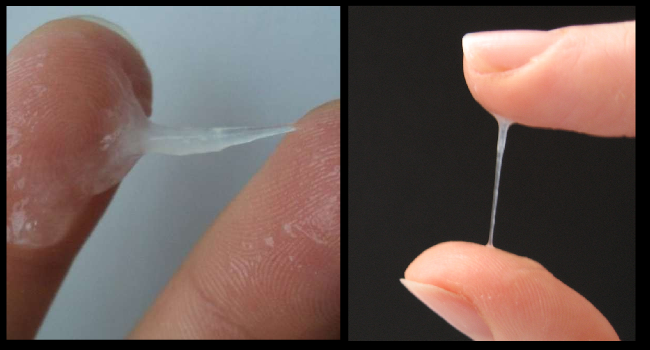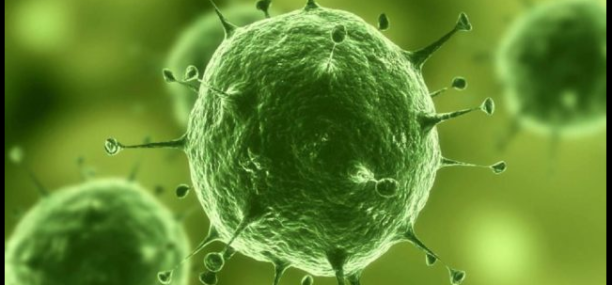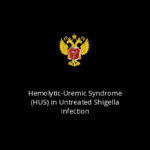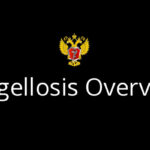What is Mycoplasmosis? Symptoms, Diagnosis and Treatment
Mycoplasmosis (Микоплазмоз, Mycoplasma genitalium, Mycoplasma hominis) is a sexually transmitted disease caused by a pathogen that is intermediate between bacteria, fungi, and viruses.
Mycoplasma genitalium, is also known as Mgen or MG.
What STD does mycoplasma cause?
Mycoplasmosis is a sexually transmitted disease caused by infection with certain types of genital Mycoplasmas (Mycoplasma genitalium and Mycoplasma hominis).
Is Mycoplasma a virus or bacteria?
Mycoplasma Genitalium and Mycoplasma Hominis are gram negative, facultatively anaerobic, bacteria in the genus Mycoplasma and the family Mycoplasmataceae in the order Mycoplasmatales, they belong to a group of genital mycoplasmas that affect up to 50% of sexually active males and females.[1] Mycoplasma Genitalium and Mycoplasma Hominis infect the genitourinary tract. Left untreated, Genital Mycoplasmas can cause non-specific urethritis (NSU) in men and pelvic inflammatory disease (PID) in women.
Genital Mycoplasmas are commensals of the lower urinary tract, in humans, these microorganisms live on the mucous epithelial cells of the urinary and genital tracts
According to recent studies published in 2007 and 2015, Mgen is becoming increasingly common. [1][3][4]
Genital Mycoplasmas are correlated with HIV risk among homosexuals
How long does mycoplasma live outside the body?
Outside the human body at room temperature, mycoplasmas can live up to 90 days. At a temperature of 60 ° C, mycoplasmas die within 10 minutes. When boiled or at a negative temperature, they die almost immediately. The death of mycoplasmas in ultraviolet occurs within 3 hours.
Mycoplasmas weakly adapt to hypotonic and hypertonic conditions.
How many types of mycoplasma?
Mycoplasmas are potentially pathogenic commensals in the genus Mycoplasma, they belong to the family Mycoplasmataceae in the order Mycoplasmatales. According to modern classification, there are about 100 species in the genus Mycoplasma, whereas, the Mycoplasmataceae family is divided into 2 genera.[1][5]
What is mycoplasmosis in men?
Mycoplasmosis is a sexually transmitted genitourinary disease caused by infection with genital mycoplasmas (Mycoplasma hominis and Mycoplasma genitalium). Genital Mycoplasmas penetrate into the epithelial cells of the urethra, provoking inflammatory diseases of the urogenital tract.
Genital mycoplasmas play an etiologic role in both urinary tract infections and male infertility.
What is mycoplasmosis in women?
Mycoplasmosis is a common sexually transmitted infection in women. Genital mycoplasmas are potentially pathogenic microorganisms, which in case of high concentration cause inflammation, angiogenesis, microvascular remodeling, and chromosomal aberrations in host cells.[1]
Overgrowth of genital mycoplasmas (over 10 * 4 CFU) in the epithelial cells of the urogenital tract caused by mycoplasmosis trigger the inflammatory cascade: redness (rubor), swelling (tumor), increased heat (calor), pain (dolor), and loss of function (functio laesa).
Left untreated, genital mycoplasmas lead to serious medical conditions such as PID and infertility.
How can you get infected with mycoplasmosis?
Mycoplasma is transmitted primarily through unprotected vaginal, anal or oral sex with someone who has mycoplasma genitalium. Sometimes infection can occur suddenly due to the overgrowth of genital mycoplasmas in the epithelial cells of the urogenital tract
Mycoplasma pneumoniae can be obtained by airborne droplets.
How is mycoplasma genitalium or hominis transmitted?
In most cases, genital mycoplasmas (Mycoplasma genitalium and Mycoplasma hominis) are caught from other humans (sick people and pathogen carriers). Genital mycoplasmas are usually transmitted by means of contact with infected semen or vaginal fluid, through unprotected vaginal, oral, or anal sex, and by vertical transmission. Additionally, mycoplasmas can also be passed on by sharing used sex toys or by touching the genitals with fingers.
Can you get mycoplasma genitalium from kissing?
In most cases, mycoplasma genitalium is passed on through unprotected vaginal, oral, or anal sex with someone who has the infection. The risk of catching mycoplasma genitalium from kissing is low. However, theoretically, it is possible to get mycoplasma genitalium through mouth-to-mouth kissing if your partner’s mouth is infected with mycoplasma genitalium, if there was oral contact with the partner’s genitals, vagina, or anus before
It is possible to get mycoplasma genitalium after receiving oral sex from a partner with a mouth infection.
Is it possible to get infected with mycoplasma through a kiss?
Genital mycoplasmas (Mycoplasma hominis and Mycoplasma genitalium) are not transmitted by kissing the face, hair, hands, feet. In fact, Mycoplasma is unstable to external influences, and it quickly dies outside the human body. Therefore, the risk of catching mycoplasma genitalium through kissing mouth to mouth is extremely low, if there was no oral contact with the partner’s genitals, vagina, or anus before.
Is it possible to get mycoplasma through a towel?
Hygiene habits contribute to sexually transmitted diseases, dirty towels can carry high microbial or bacterial loads, and they’ve even been linked to spreading various infectious diseases. However, household transmission of genital mycoplasmas through household items, towels, linen, washcloths is nearly impossible, because genital mycoplasmas cannot exist in the external environment
Genital Mycoplasmas (Mycoplasma hominis and Mycoplasma genitalium) are considered commensals in the genitourinary tract, thus the presence of mycoplasmas in the body does not always lead to mycoplasmosis.
Is it possible to get mycoplasmosis from cats?
It is unlikely that Mycoplasma species-associated with feline mycoplasmosis is transmitted to humans. Cats carry Mycoplasma felis and Mycoplasma gatae (M. gatae) strains that are not dangerous to humans
What is the incubation period for Genital Mycoplasmosis?
The incubation period for Genital Mycoplasmosis ranges from 2 to 35 days. Mycoplasmosis is characterized by a gradual onset, symptoms usually develop abruptly and progress slowly. Without proper antibacterial therapy, symptoms usually reach their peak within 30-60 days
Clinical presentation of genital mycoplasmosis can vary from mild to severe, early symptoms may include: penile discharge, abnormal vaginal discharge, dysuria, a smelly vagina, abdominal discomfort, burning sensation in the penis when urinating, swelling at the opening of the urethra, urinary hesitancy, urinary urgency, lower abdominal pain, and bleeding between periods, often after sex
Mycoplasma genitaliumis is a common cause of cervicitis in females and nongonococcal urethritis (NGU) in males.
Why is mycoplasma infection dangerous?
Left untreated, the presence of mycoplasmas in the body can lead to the development of serious complications, such as infertility, menstrual irregularities, miscarriage, placental abnormalities, and polyhydramnios (excessive accumulation of amniotic fluid around the baby during pregnancy)
Is mycoplasma STD contagious?
Mycoplasma can be passed from one person to another during unprotected intercourse (UI) or foreplay (genital touching or rubbing). Some women and men may have NO symptoms.
How long is a person contagious with Mycoplasma genitalium?
If you have mycoplasmosis, your sexual partner(s) should be tested and treated even if he or she are asymptomatic. Both you and your partner(s) should be given treatment at the same time to prevent reinfection and further spread of the disease. With treatment, Mycoplasmosis should clear up in about a week or two.
You should refrain from having sex until you and your partner have completely finished treatment so you don’t infect others. Women with PID should refrain from having sex until 14 days after the start of treatment or 14 days after symptoms have resolved, whichever is later. It’s OK to resume having sex one week after the start of treatment.
Who is a carrier of mycoplasma?
Mycoplasmas are characterized by polymorphism and a peculiar life cycle. The source of infection is a person with mycoplasmosis, or a healthy carrier of mycoplasmas. Mycoplasma infections of the urogenital tract occupy one of the leading places among STIs.[1]
What happens if you have Mycoplasma genitalium?
Genital mycoplasmas are commensals of the lower urinary tract, they cause genitourinary infection only in case of high concentration (over 10 * 4 CFU). Early symptoms of genital mycoplasmosis can mimic clinical signs of urethritis: itching around the vaginal area, lower abdominal pain, swollen itchy urethral opening, dysuria, urethral discharge, and vaginal discharge with an unpleasant odor. Left untreated, mycoplasma genitalium can cause a number of complications, such as pelvic inflammatory disease (PID) in women and infertility in both men and women
What are the manifestations of mycoplasmosis in women?
Symptoms of mycoplasmosis in women include:
1- Unusual vaginal discharge with an unpleasant odor

2- Itching around the vaginal area
3- Impaired urination: Dysuria, urinary hesitancy, and urinary urgency
4- Discomfort, pain, or itching in the urethra
5- Vulvodynia
6- Episodic pain in the area below your bellybutton, spreading to the lumbar region, groin, scrotum
7- Decreased libido
8- Dyspareunia (pain during sex)
9- Postcoital bleeding (genital bleeding after sex)
10- Abnormal vaginal bleeding between periods (intermenstrual bleeding, spotting, and metrorrhagia)
11- Generalized fatigue and weakness
12- Reproductive dysfunction, such as PID, infertility
What are the manifestations of mycoplasmosis in men?
Signs and symptoms of mycoplasmosis in men can include:
1- Milky watery discharge from the penis
2- Burning sensation in the penis when urinating
3- Itchy urethra
4- Urinary urgency (a frequent, urgent need to urinate)
5- Urinary hesitancy
6- Generalized fatigue and muscle weakness
7- Infertility
Does Mycoplasma genitalium cause a smell?
Malodorous vaginal discharge is a common complaint, particularly among the majority of symptomatic women who harbored mycoplasma hominis. On testing, test results revealed a vaginal pH > 4.7, a positive amine test, and clue cells
Is it possible to get pregnant with mycoplasmosis?
Genital mycoplasmas affect up to 50% of sexually active females, the majority of these females peacefully coexist with the opportunistic mycoplasmas (Mycoplasma hominis and Mycoplasma genitalium), and at the same time give birth to healthy babies without problems. However, when genital mycoplasmas infect the human placenta, they can cause chorioamnionitis (intraamniotic infection), placental insufficiency, and as a result, recurrent pregnancy loss (RPL) or recurrent abortion
How to detect mycoplasmosis?
Genital mycoplasmas are potentially pathogenic commensals in the genitourinary tract, which is why some people may be infected for years without knowing it.
Testing for mycoplasmosis can be done using a blood sample (to detect antibodies in response to a mycoplasma infection), a urine sample, or a sample of discharge (mucus and cells) from the vagina, cervix, or urethra.
Can urine test detect Mycoplasma?
The highly sensitive M. genitalium NAAT assay (Nucleic Acid Amplification Test) can be done to look for the presence of mycoplasma genitalium in the urine. Alternatively, a vaginal swab test for Mycoplasma Genitalium looks for Mycoplasma Genitalium on the swab and amplifies it using DNA PCR technology, which is why this test one of the most accurate available
Mycoplasma PCR test or the EZ-PCR™ Mycoplasma Detection Kit is a highly sensetive and specific PCR assay used to detect various species of mycoplasma.
Where do mycoplasmas live?
Mycoplasmas are fastidious microorganisms, that will grow only if special nutrients are present. Mycoplasmas are cultivated on special selective (elective) broth media. A routine mycoplasma medium consists of various extracts and peptones, sodium chloride, low concentration agar (semi-liquid 0.3% [w/v], columns in test tubes or Petri dishes with a concentration of 1.3% [weight/volume]).
Can mycoplasma genitalium cause BV?
In women with symptomatic vaginitis, prevalence of mycoplasma genitalium infection is associated with BV. BV treatment is recommended for all women with bacterial vaginosis whether symptomatic or asymptomatic as a component of disease-prevention strategies for sexually transmitted diseases
Approximately 84 percent of women with BV reported no symptoms
Which doctor treats mycoplasmosis?
Accordingly, the specialist who will diagnose and treat mycoplasmosis is a phthisiatrician or therapist.
Why is mycoplasma not well treated?
Compared to other pathogens, it is quite difficult to cure mycoplasma hominis and/or mycoplasma genitalium because they are considered commensals in the genitourinary tract, they cause genitourinary infection only in case of high concentration, usually ≥ 10^5 CFU/ml
Being a component of the microflora, the presence of mycoplasmas in the body does not always lead to mycoplasmosis
Without an effective treatment against mycoplasma hominis and/or mycoplasma genitalium there is no possibility of eradicating it. With treatment, its concentration often drops, but the bacterium itself remains
Should Mycoplasma Hominis be treated in men?
Mycoplasma Hominis is the primary cause of UTIs in men. Left untreated, the presence of mycoplasmas in the body can lead to the development of serious complications, such as infertility. If M. genitalium is detected, a duration of 7–14 days of antibiotics is recommended in adults
What antibiotic treats Mycoplasma genitalium?
Mycoplasma infections are treated with antibiotics such as azithromycin, josamycin, doxycycline, moxifloxacin (Avelox), or levofloxacin (levaquin®).
How to recover from mycoplasma?
Macrolides, like josamycin, azithromycin, and doxycycline are recommended as the first-line antibiotics for M. genitalium infections. Tetracycline antibiotics, and fluoroquinolones, like moxifloxacin and levofloxacin are considered second line antibiotics, often prescribed in an alternative antimicrobial therapy. In addition, topical antimicrobial agents and antiseptics are tailored to the individual patient based on their predicted response or risk of disease
If M. genitalium is detected, a regimen of moxifloxacin 400 mg orally once daily for 14 days has been effective in eradicating the organism
What is the best treatment for mycoplasma?
Since mycoplasmas and ureaplasmas are intracellular parasites, the antimicrobial antibacterial properties of josamycin (a macrolide antibiotic) make it an ideal drug for the treatment of infections caused by these pathogens. The high clinical efficacy of josamycin has also been proven.[2]
If either M. genitalium or M. hominis were detected, your doctor may prescribe two 500 mg josamycin tablets twice a day, for 7-14 days (orally).
How much to drink azithromycin with Mycoplasma?
To treat genital mycoplasmas, your doctor may prescribe 250 mg Azithromycin tablet 1 time per day for 6 days (orally) or a single dose of 1.0 g orally. Azithromycin, a new macrolide antibiotic is taken 1 hour before meals or 2 hours after meals
How long does mycoplasma genitalium last after treatment?
The median duration of MG infection after a 6-day course of treatment with azithromycin among men and women with macrolide-sensitive infections range between 12 and 17 days.
How to treat mycoplasmosis in children?
Treatment of mycoplasmosis in children combines antibacterial therapy with life modifications and 24 hour patient care (Combination therapy or polytherapy).
Besides giving the effective antimicrobial agents (doxycycline, tetracyclines, or josamycin), treatment usually includes implementation of a number of recommendations:
1- Bed rest
2- Drinking water and other fluids (soups)
3- Eating foods high in vitamin c, d and zinc
4- Expose the child’s body to sunlight for about 15 minutes daily
5- Eating more berries, fruits, nuts, cocoa, vegetables, and other antioxidant foods (body detoxification)
6- Reducing amount of salt in food to less than 5 grams
7- Avoid junk foods and foods high in animal fat
8- Check if your child has a high temperature periodically
9- Massage or physiotherapy
What happens if you don’t treat mycoplasma genitalium?
Untreated mycoplasma genitalium could lead to serious complications:
Infertility, the inability to conceive.
Spreading the infection. You may pass the infection during sex to your partner/s even if you don’t have symptoms. Besides that, there is an increased risk of getting or spreading other sexually transmissible infections STIs
Can I make love with a condom during mycoplasma treatment?
It is necessary to avoid any kind of sexual contact until the end of treatment and disappearance of symptoms consistent with genital mycoplasmosis.
Is it possible to have oral sex with Mycoplasma?
Due to the fact that mycoplasma infects the mucus membranes of the throat, urethra, cervix, or anus, you should use male condoms and other barrier methods every time you have sex
Transmission of mycoplasma by oral contact is possible
Does Mycoplasma affect pregnancy?
Developing mycoplasma infection during pregnancy could lead to serious complications. The activity of the microorganism causes premature birth and provokes the development of a non-developing pregnancy (anembryonic pregnancy or frozen pregnancy), when the process of fetal formation is suspended. In rare cases, the pathological agent does not affect the baby.
References
Verified by: Dr.Diab (October 10, 2022)
Citation: Dr.Diab. (October 10, 2022). What is Mycoplasmosis? Symptoms Diagnosis and Treatment. Medcoi Journal of Medicine, 32(2). urn:medcoi:article21072.














There are no comments yet
Or use one of these social networks